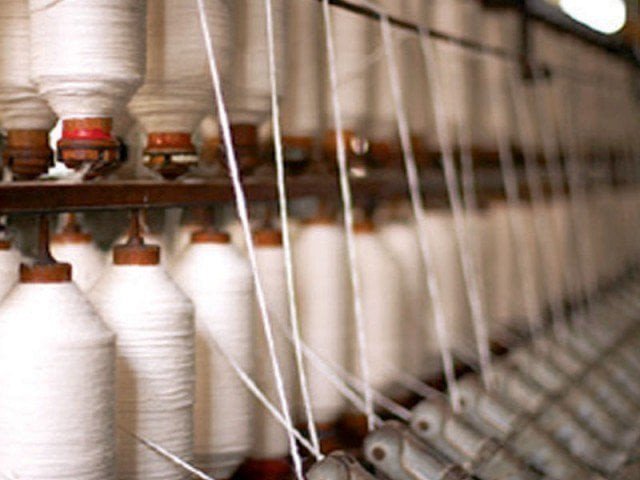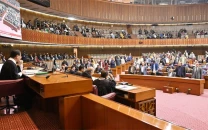Despite pandemic, textile sector bounces back
Stakeholders still worried about country’s thin share in global textile exports

Pakistan’s textile sector has helped the country pass through a difficult phase, especially during 2020, which is still a threat to the entire world.
Covid-19 was the biggest challenge for the outgoing 2020, which disrupted global economies and their supply chains. Pakistan too felt the heat of the deadly virus, starting late February, but surprisingly within a couple of months, the country’s textile industry was back on track.
Textile sector is called the backbone of Pakistan’s economy as it enjoys around 60% share in total exports. Its contribution to the national gross domestic product (GDP) is 8.5% and it employs around 15 million people, directly and indirectly.
Stakeholders, however, are worried over Pakistan’s minuscule share in global textile exports. Pakistan’s share was calculated at 1.7% in 2019 out of the $941 billion world textile market and it may have remained stagnant in 2020 since very few textile houses were working on real value-added products.
“Pakistanis normally follow the trend and the same is the case with textile sector,” said Ulfat Textile Mills Managing Director Adeel Usman. “There are a few big textile houses which are working on value addition because they know that it will increase their profit margins in the export market.”
Usman stressed that they could work on research and development (R&D) programme since they were big entities, having great resources and connections in export markets.
“The State Bank of Pakistan (SBP) normally provides concessionary loans to such groups, whereas medium and small-scale units cannot enjoy cheap loans and are stuck with lengthy and hectic documentation, which is why a majority of these textile units avoid value addition,” Usman added.
Nearly all global players, The Express Tribune has talked to in the past, have urged their Pakistani counterparts to focus on value addition for a greater share in the European and American markets. A lack of value addition is the reason why export figures have been almost stagnant for a decade.
In financial year 2019-20, Pakistan’s textile sector fetched $12.5 billion in export earnings against $13.33 billion in 2018-19, whereas in 2010-11 the export revenue stood at $13.8 billion.
In the first five months of 2020-21, the sector posted export revenue of $6.05 billion against $5.76 billion for the corresponding months of previous year. Many exporters and government officials are calling it a huge success, but some say the figure could have been improved.
“Pakistan has missed an opportunity to earn more revenue by exporting polypropylene masks at the right time,” said Pakistan Readymade Garments Manufacturers and Exporters Association (PRGMEA) Patron-in-chief Ijaz Khokhar.
Unnecessary approvals required from different departments caused delay in the export of masks and fetching some more revenue. “Pakistan should have earned around $200 million via export of polypropylene masks but in reality we managed to earn only $30 million,” Khokhar added. Nevertheless, most of the textile entrepreneurs are optimistic about the future, believing Covid-19 has somehow helped boost the sector.
Khokhar said currently the entire value chain was overloaded with export orders due to lockdown in competing markets and expected the trend to continue in future. However, securing raw material is becoming a challenge since the country’s cotton production has dropped drastically.
All Pakistan Textile Mills Association (Aptma) Chairman Adil Bashir said things could not turn around overnight.
“Industry’s demand for rationalising energy tariff had been accepted by the current government and just when we were about to take off in early 2020, Covid-19 hit the world,” Bashir told The Express Tribune.
“We were operating at 100% capacity at the start of this year and currently we are also running at full capacity, but without new investment we cannot achieve a major increase in export revenue,” he added.
“Only 5% growth is not enough given the size of our economy, some people are making new investment in this sector, which will start paying dividends somewhere in June next year.
“The real strength of this sector will be visible when industrialists, who are not hitherto part of the textile sector, invest in Greenfield projects.”
It could not be done until the government streamlined things for the sector, Bashir said. “This important sector does not have a proper textile policy to date, the policy should be implemented in true letter and spirit along with long-term energy tariffs to build investors’ confidence, else the sector may not perform as it should in the coming years.”
Published in The Express Tribune, December 27th, 2020.
Like Business on Facebook, follow @TribuneBiz on Twitter to stay informed and join in the conversation.


















COMMENTS
Comments are moderated and generally will be posted if they are on-topic and not abusive.
For more information, please see our Comments FAQ